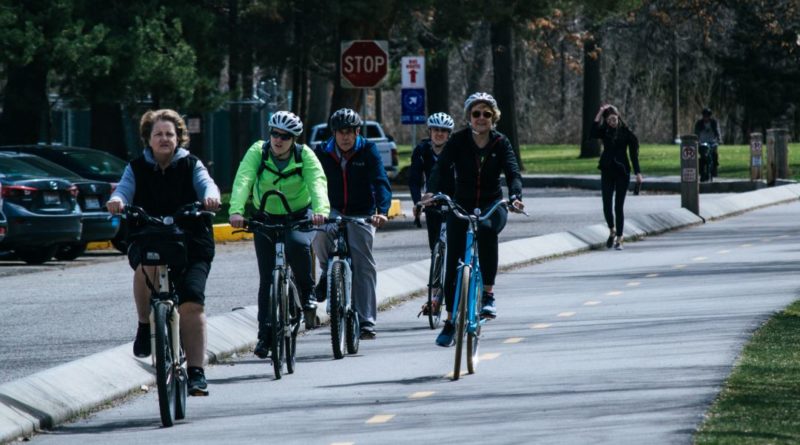Traffic speeds under 20mph encourage cycling to work, finds University of Surrey study
A study by The University of Surrey has revealed that people were most likely to cycle when traffic speeds along their route were under 20mph, providing evidence to debates about speed limits in urban areas.
The research team also found that cycle paths encourage higher levels of cycling, but their effectiveness depends on local traffic conditions. The findings could help Surrey County Council and other local authorities identify where best to separate cycle and motor vehicle routes to encourage more cycling.
Additionally, results showed that crossing busy roads also deter people from cycling as commuters are less likely to cycle if their route to work crosses roads with traffic that is both fast-moving and high volume.
The study, published in the International Journal of Sustainable Transportation, analysed traffic data for all roads and cycle routes in Surrey to look at how different vehicle speeds, volumes, the proportion of heavy goods vehicles (HGVs), and the amount of cycling infrastructure along the shortest route to work corresponded with the proportion of commuters choosing to cycle. It also considered distance, hilliness and the effect of traffic crossing the route at junctions. In total it examined nearly 35,000 routes to work for 172,000 commuters living in Surrey and who lived between two and five kilometres from work.
Dr Susan Hughes said: “Cutting speeds may be unpopular with drivers, but our research shows it does encourage people onto their bikes. It’s a change which, if implemented strategically, may encourage more people to cycle, with the added benefit on people’s health from reduced carbon emissions. Hence, there are opportunities to make towns more attractive to cyclists.”
Dr Nick Grudgings, the lead author, said: “Our findings can help local authorities make the best decisions about where to invest in cycling infrastructure. More cycling doesn’t just mean towns and cities are reducing their CO2 emissions, it also means commuters are keeping active and reducing their risk of heart disease, depression and premature mortality.”


